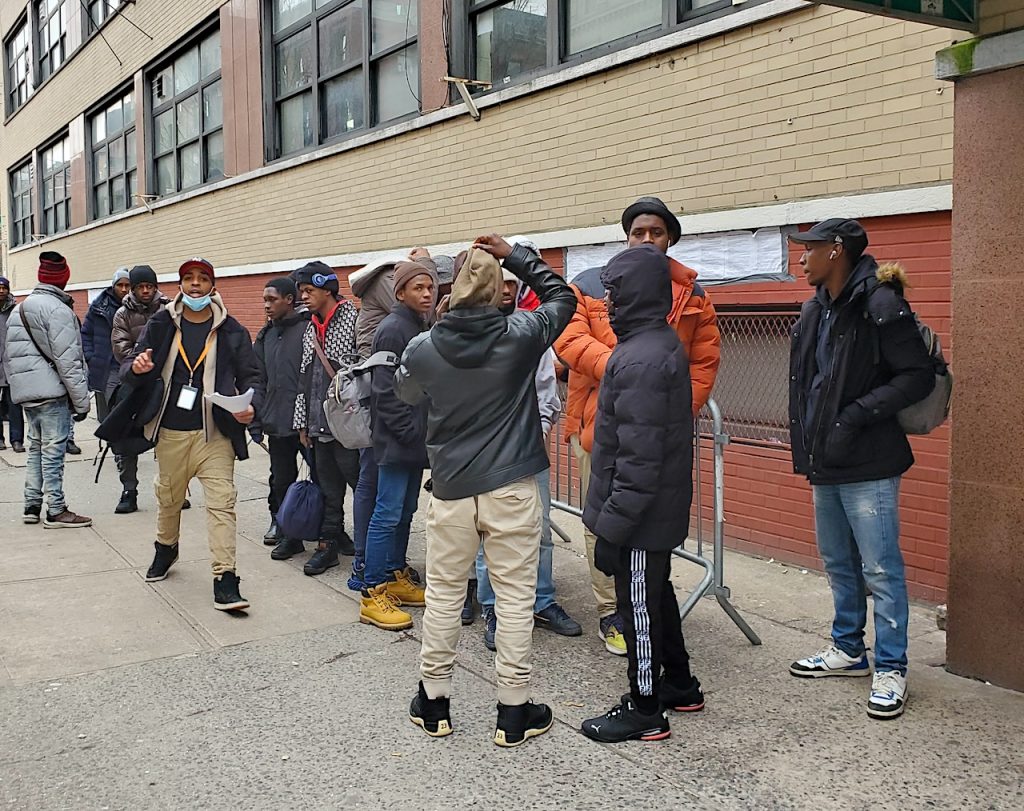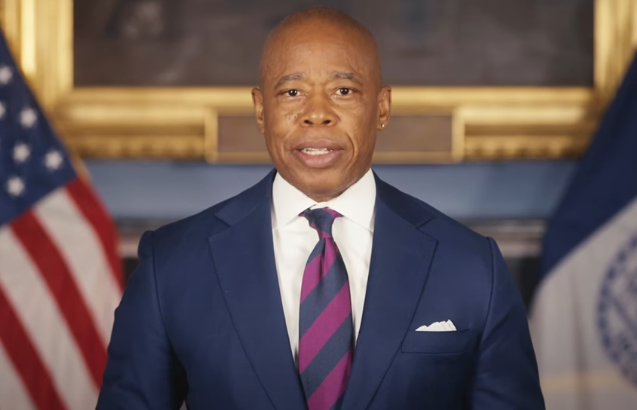Mayor Eric Adams today announced that New York City has come to an agreement with the Legal Aid Society, giving the city added flexibility under the 1981 consent decree in Callahan v. Carey, related to the city’s “right to shelter” during the current migration crisis.
The agreement basically limits the ability of single migrants to keep reapplying for shelter.
After months of negotiations, the parties have come to an agreement that gives the city more tools to manage entries and exits of single adult migrants from the shelter system and ensure the city has the flexibility it needs to continue supporting vulnerable New Yorkers.
The city consistently argued that the Right to Shelter — put into place more than 40 years ago, when the city’s shelter system had fewer than 2,500 people in its care — compared to the 120,000 people, about 65,000 of whom are migrants, currently in the city’s care — was never meant to apply to a national humanitarian crisis like the one New York City faces today.
Today’s stipulation relieves New York City of certain obligations under the Callahan decree during this current declared state of emergency. It allows the city to manage the influx of new arrivals, and provide adult migrants 30 days of shelter without the ability to reapply for shelter unless the individual has demonstrated they have an extenuating circumstance necessitating a short additional amount of time in shelter, or have received a reasonable accommodation due to a disability.
To better support younger-adult new arrivals, persons under 23 years of age will be provided 60 days of shelter. Finally, the city will continue to provide reticketing services (plane and bus tickets to anywhere in the world they want to go) to help more people move out of shelter and “continue their journeys toward self-sufficiency.”

The settlement applies only to adults seeking shelter and does not impact families with children.
“New York City has led the nation in responding to a national humanitarian crisis, providing shelter and care to approximately183,000 new arrivals since the spring of 2022,” Adams said. “But we have been clear, from day one, that the ‘Right to Shelter’ was never intended to apply to a population larger than most U.S. cities descending on the five boroughs in less than two years.
“Today’s stipulation acknowledges that reality and grants us additional flexibility during times of crisis, like the national humanitarian crisis we are currently experiencing. Thank you to the court and the Legal Aid Society, for recognizing that the status quo cannot continue and for giving New York City additional tools to address this crisis while ensuring that the most vulnerable can continue to receive the support they need. Like impacted cities across the country, we cannot bear the brunt of this crisis alone and continue to seek significant support from our federal partners, including expedited work authorizations, more funding and a national resettlement strategy.”
“When the original Callahan settlement was reached, no one could have foreseen the migrant crisis New York City has faced for the past two years,” said Lisa Zornberg, City Hall chief counsel. “This new agreement reflects the reality we’re currently in and allows New York City to appropriately manage this crisis.”
Since this national humanitarian crisis began, New York City has opened up more than 200 emergency sites. The city has also enrolled tens of thousands of children in public schools through Project Open Arms; and set up, with funding from New York State, a first-of-its-kind Asylum Application Help Center, through which the city has helped individuals submit roughly 40,000 asylum, Temporary Protected Status and work-authorization applications over the past eight months.
The Adams administration says it continues to prioritize helping migrants live independently, despite the lack of significant or timely state or federal assistance. According to City Hall, more than 60 percent of the asylum seekers who have come through the city’s intake center have left the city’s care and are “taking the next steps toward self-sufficiency.”


This is terrible.
Never expected this of Legal Aid. Very disappointing